Affiliate marketing has emerged as a powerful strategy to drive sales and increase brand visibility.
By collaborating with affiliates who promote your products or services, you can tap into their audience and gain access to potential customers.
This approach not only enhances your brand’s reach but also allows you to pay only for performance, ensuring that your marketing budget is well spent.
In this guide, I will explore the key components of a successful affiliate marketing campaign, helping you navigate the process with confidence.
Disclaimer: If you buy any products through links on this site, I may earn a commission. But it doesn't make any difference to your cost, and it helps me keep this blog running. So you could always read my articles for free.
What is an affiliate marketing campaign?
An affiliate marketing campaign is a strategic approach where you, as a merchant, collaborate with people (affiliates) to promote your products or services.
Instead of traditional advertising, you rely on affiliates to drive traffic or sales, rewarding them with a commission for every successful lead, sale, or specific action they generate.

For example, imagine you run an online store selling fitness gear. You partner with a fitness influencer who shares your products on their blog or social media.
Every time someone clicks their unique affiliate link and makes a purchase, you pay them a percentage of the sale. This allows you to reach their engaged audience without upfront marketing costs.
Affiliate marketing campaigns are flexible and performance-driven. You set the terms, like the commission rate and acceptable promotional methods.
For instance, you might allow affiliates to use social media ads but prohibit email spamming. And you can use affiliate tracking software to ensure you can monitor clicks, sales, and payouts accurately.
By building an affiliate campaign, you create a win-win relationship: affiliates earn income while you expand your reach and drive results.
It’s a scalable strategy, especially if you want to boost sales or awareness without a massive advertising budget.
Why run an affiliate marketing program?
Running an affiliate marketing program is a powerful way to grow your business by leveraging the influence and reach of others.
For starters, as I said before, the performance-based model ensures you pay only for measurable results, like sales or leads, making it a cost-effective marketing strategy.
Second, affiliate marketing campaigns also help you reach niche markets. Imagine you sell eco-friendly cleaning products.
Partnering with influencers in the sustainable living space allows you to connect with environmentally conscious consumers who might not find you otherwise.
Another benefit is scalability. As your affiliate network grows, so does your reach—without increasing your advertising budget.
Steps to plan an affiliate marketing campaign
By running an affiliate marketing program, you create a mutually beneficial system that drives consistent, measurable growth while keeping your marketing efforts focused and efficient. Let’s see how to get started.
Identify your target audience
Knowing your target audience is critical. Dive deep into their demographics, interests, and online behaviors.
For example, if you sell high-end kitchen appliances, your ideal audience might include food enthusiasts, chefs, or home cooks who value quality.
You can use tools like Google Trends and SurveyMonkey to uncover what your audience cares about and where they spend time online.
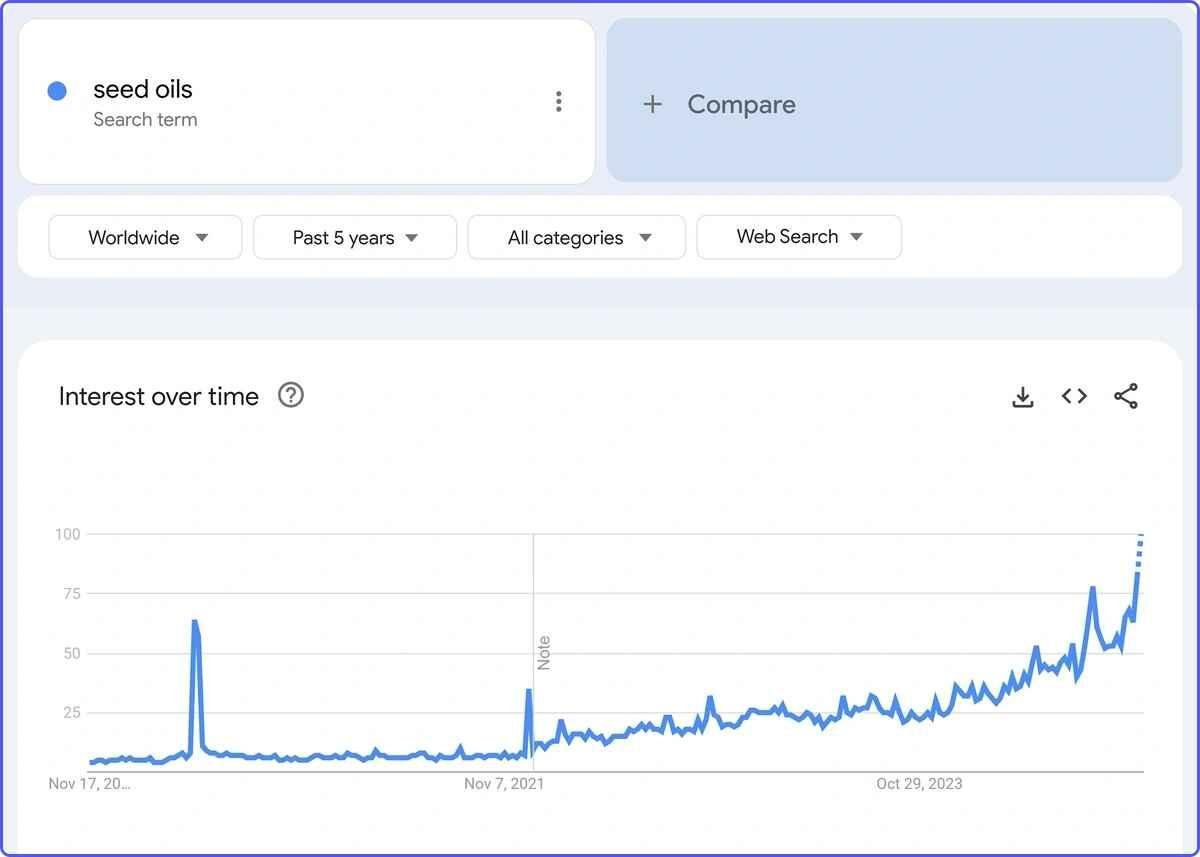
Plus, you can analyze your competitors’ affiliate marketing campaigns using platforms like Semrush to see which audiences they target and what works for them.
Choose the right products
Not all products are ideal for affiliate marketing. Select offerings that are already performing well or have a unique value proposition.
For instance, if you run an online fitness store, consider focusing on a best-selling resistance band set or a new innovative product, like a digital fitness tracker.
Aside from that, evaluate your profit margins carefully. If a product has a slim margin, you may struggle to offer an attractive commission.
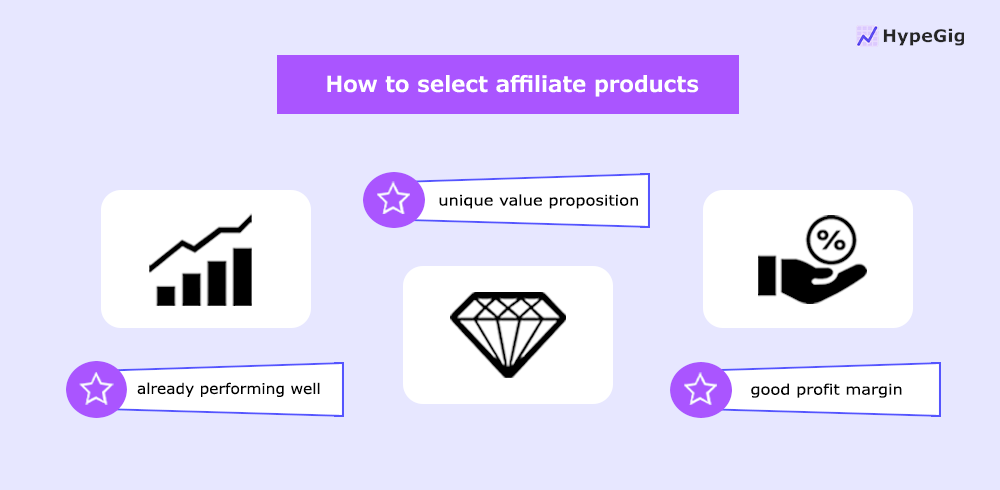
A good rule of thumb is to balance profitability with the commission rates affiliates expect in your industry.
Decide on a commission structure
Your commission structure directly impacts affiliate motivation. You need a model that’s competitive yet sustainable. For instance:
- Percentage-Based Commission: Common in eCommerce. Offer 10-20% per sale, depending on the product category.
- Flat Fee: Great for lead generation. Pay $5-$50 per lead, depending on its value to your business.
Research your competitors’ rates to ensure your offer is enticing. You can use platforms like CJ Affiliate to explore commission benchmarks in your industry.
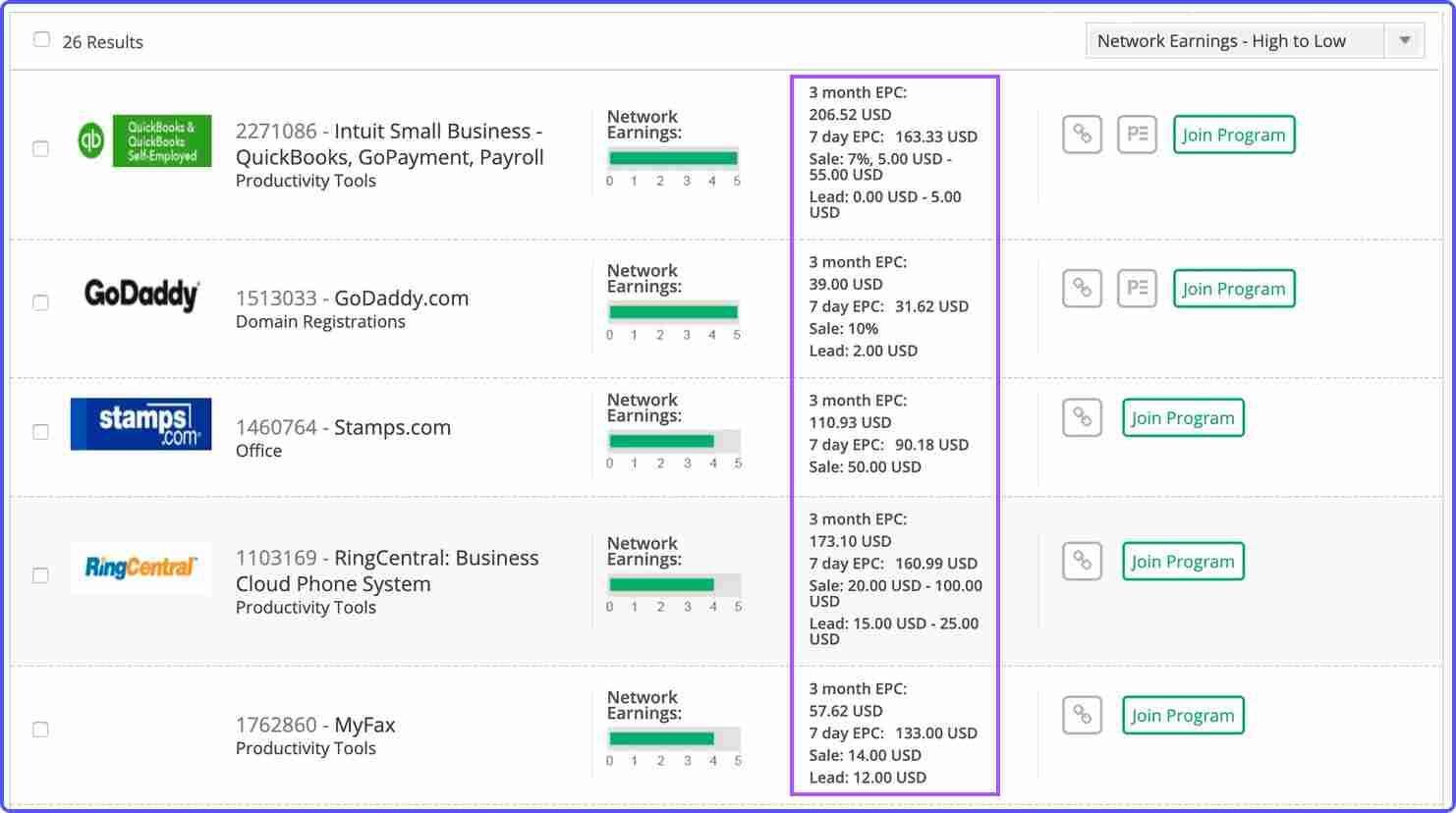
If you’re launching your first campaign for affiliate marketing, consider setting bonus incentives for early affiliates or hitting specific sales milestones.
For example, you can offer an additional 5% commission if an affiliate generates $1,000 in sales within their first month.
For more information, check out this post on affiliate marketing business models and learn how to select the right model for your business.
Select an affiliate platform
Choosing the right platform to manage your affiliate marketing program is critical. Affiliate platforms simplify tracking, payment, and communication with affiliates. Popular options include:
- ShareASale: Ideal for eCommerce businesses with a large product catalog.
- PartnerStack: Great for SaaS companies looking to scale.
- CJ Affiliate: Offers advanced tracking and reporting for various industries.

These platforms allow you to track affiliate performance, manage payouts, and offer affiliates tools like custom links and banners.
If you prefer full control, consider building an in-house program using affiliate software like Tapfiliate or Refersion.
For more details, read this article on the top affiliate marketing platforms.
Recruit affiliates
Finding the right affiliates is crucial for the success of your affiliate marketing campaign. Focus on individuals or businesses that align with your target audience.
For instance, if you sell vegan skincare products, partner with eco-conscious beauty influencers or bloggers. You can start recruiting by:
- Joining Affiliate Networks: Platforms like ShareASale or Rakuten connect you with experienced affiliates.
- Direct Outreach: Identify niche influencers, bloggers, or content creators using tools like BuzzSumo or Modash, and send personalized invitations.

Promoting Your Program: Add an “Affiliate Program” page to your website, explaining benefits and providing a sign-up form.
To learn more, view this step-by-step guide on how to hire affiliates for your campaign.
Develop marketing materials
Affiliates need resources to promote your brand effectively. By providing these resources, you don’t just help them, but also ensure consistent branding across all their promotional activities. Equip them with:
- Banners and graphics: Create and share eye-catching designs in multiple sizes.
- Product images: Provide high-quality visuals of your best-selling items.
- Pre-written content: Share email templates, blog post ideas, or social media captions they can customize.
For example, if you run a subscription box service, supply affiliates with professionally designed images showcasing what’s inside your latest box and suggest hashtags for social media.
For more information, check out this list of affiliate marketing assets.
Set terms and conditions
Setting clear rules for your affiliate marketing campaign prevents confusion and protects your brand. They also ensure transparency, which makes it easy for affiliates to trust your company. Draft terms and conditions covering:
- Promotional guidelines: Specify acceptable methods (e.g., no spam emails or misleading claims).
- Commission payouts: Outline rates, payment thresholds, and schedules. For example, pay commissions monthly with a $50 minimum payout.
- Brand guidelines: Ensure affiliates represent your brand consistently, such as using approved logos and taglines.
Provide this information in a welcome email or a dedicated affiliate dashboard to ensure affiliates have easy access.
For more details, check out this post on affiliate marketing terms and conditions.
Launch the campaign
Kick off your campaign with a strong launch. Send a welcome email to affiliates that includes their unique tracking links, access to marketing materials, and clear instructions for getting started.
For example, here’s Cloudways’s email to a new affiliate on how to sell more:

Besides that, consider hosting a webinar or creating a tutorial video to explain your affiliate marketing program in detail and answer common questions.
For example, if you’re launching an affiliate marketing campaign for a SaaS product, show affiliates how to demonstrate key features or address common objections in their promotions.
You can use tools like Zoom or Loom to create these onboarding resources.
Monitor performance
Tracking affiliate performance is essential to understand what’s working and what isn’t. Use your affiliate platform’s analytics to monitor:
- Clicks: How many users visit your site via affiliate links.
- Conversions: Sales or leads generated by affiliates.
- Payouts: Commission amounts paid to affiliates.
For example, if one affiliate generates high traffic but few conversions, analyze their content to identify gaps. Maybe their audience isn’t a good fit, or their promotion strategy needs refinement.
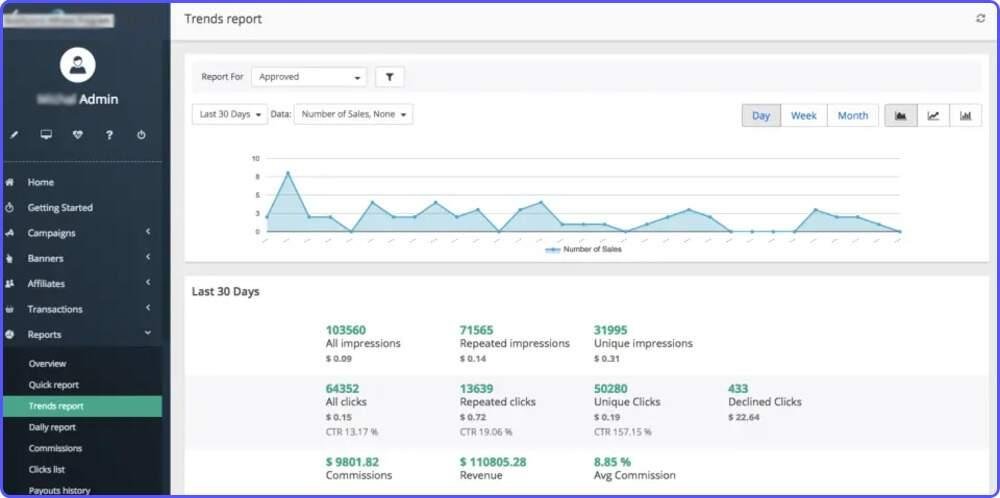
Platforms like Google Analytics (with UTM tracking) and Post Affiliate Pro provide in-depth reporting to help you make data-driven decisions.
To learn more, view this list of various affiliate marketing metrics to track.
Communicate regularly
Frequent communication keeps affiliates engaged and motivated. Share updates, tips, and new opportunities through email newsletters or a dedicated affiliate dashboard.
Here are some common templates you can use for your affiliate marketing campaign.
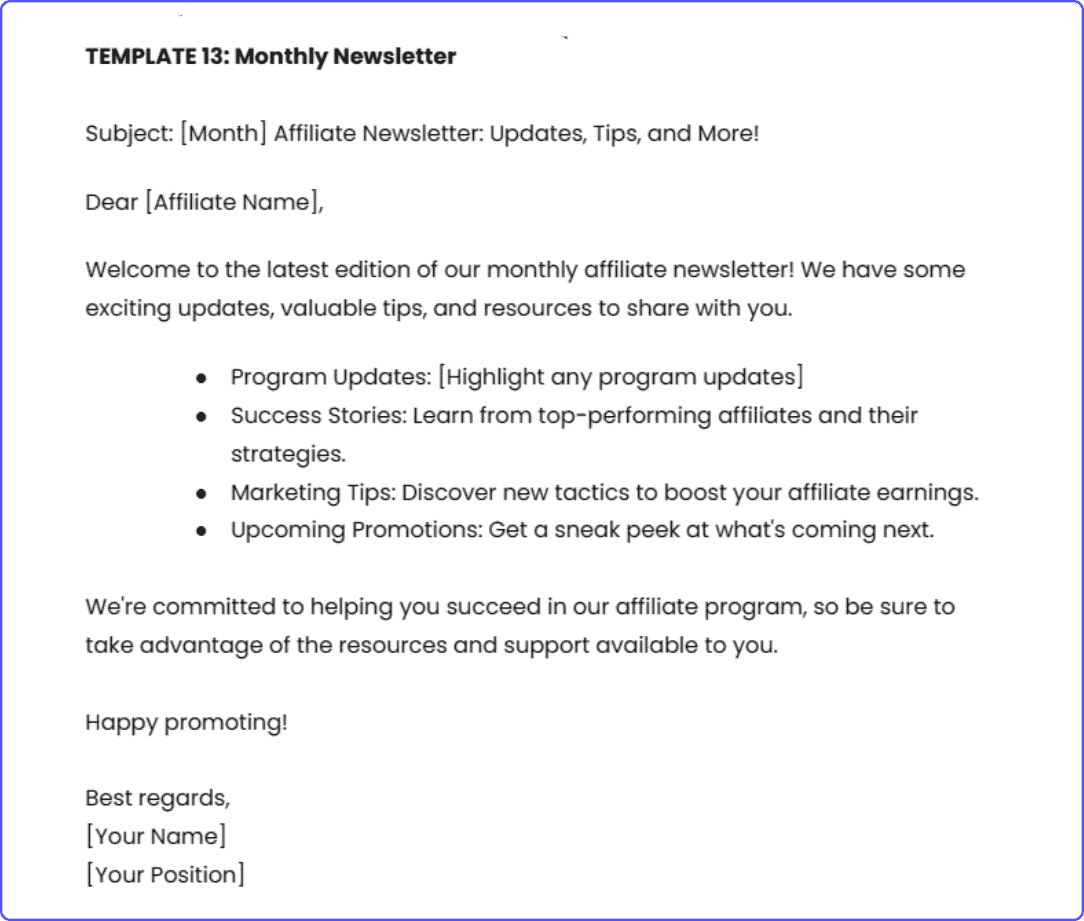
You can communicate:
Monthly performance updates: Highlight top-performing affiliates and celebrate milestones.
Exclusive offers: Provide special discounts or bonus commissions for limited periods to incentivize more promotions.
Feedback opportunities: Ask affiliates about the challenges they face and offer support.
Adjust and optimize
Campaign optimization requires continuous tweaks. Analyze your data to identify underperforming areas and test new strategies:
Experiment with commission rates: Increase rates for high-ticket items to encourage more promotions.
Test marketing materials: Update creatives or content to reflect trends or feedback from affiliates.
Expand your network: Recruit new affiliates in untapped niches, such as partnering with video creators on YouTube if you’ve primarily focused on bloggers.
For more details, read this article on optimizing affiliate campaigns.
Evaluate and scale
At the end of your affiliate marketing campaign, compare the results to your initial goals. If you met or exceeded expectations, scale the affiliate marketing program by:
- Recruiting more affiliates.
- Offering exclusive deals for top performers.
- Expanding into new geographic or audience markets.
For example, if your product gained traction in the fitness niche, consider targeting wellness or lifestyle influencers to broaden your reach.
Wrapping up: affiliate marketing campaign
An affiliate marketing campaign is a dynamic strategy that allows you to leverage the reach and influence of others to grow your business.
By planning carefully, creating a robust program, and managing it effectively, you can drive measurable results while building valuable relationships with your affiliates.
Ultimately, a well-executed affiliate marketing program benefits everyone involved. Your business gains exposure and revenue. Affiliates earn income.
And customers discover products and services that meet their needs. It’s a win-win strategy for growing your brand in today’s competitive market.
Did I miss anything? Did you try these steps? Do you have any questions or comments? Share your thoughts below in the comments section.





